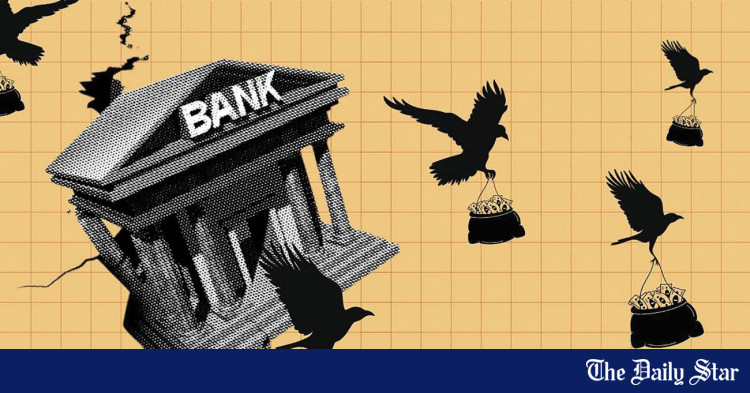The banking industry of Bangladesh is going through a critical period marked by significant challenges, including the largest amount of non-performing loans (NPLs) ever, extreme liquidity problems in stressed banks, capital flight through trade-based money laundering, a substantial lack of corporate governance, provisioning shortfalls, and a foreign currency crisis. The ongoing crisis has been caused by the last one and a half decades of grand-scale deviation of governance in the banking industry. Since inception, the Bangladesh Bank has issued licences to 62 scheduled banks (including six state-owned commercial banks, three specialised banks, 43 private commercial banks, one digital bank, and nine foreign commercial banks) and 34 non-bank financial institutions. However, there is a controversy regarding whether the size of the economy can sustain so many banks. In this context, unipolar decisions made by different political regimes, without considering the sector’s sustainability, are primarily responsible for the current crisis.
If we look at other Asian countries, in Malaysia, there were 42 banks operating against a GDP size of $399.71 billion in 2023. In Indonesia and Thailand, the numbers are 106 and 30, respectively, against GDP sizes of $1,371.17 billion and $514.97 billion. Similarly, India has 95 scheduled banks with a GDP size of $3,567.55 billion. In Pakistan, the number of banks stood at 41 in 2023, with a recorded GDP size of $337.91 billion. Meanwhile, in Bangladesh, there were 62 banks in 2023, against a GDP size of $437.42 billion. Similarly, Myanmar has 48 banks against a GDP size of $66.76 billion. Myanmar and Bangladesh have the highest numbers of banks with respect to their GDP sizes in the South-Southeast Asian region.
Since Bangladesh’s independence and its transition to an open market economic system through trade liberalisation (1971-1990), the banking industry experienced a slow pace of growth. However, after globalisation and the advent of technological advancements, the industry gained momentum. After the independence, the banking industry started its journey with six nationalised commercial banks, three state-owned specialised banks, and nine foreign banks. In the 1980s, the sector saw a significant expansion with the launch of private banks, starting with the licensing of the Arab-Bangladesh Bank Limited in 1981. The Awami League-led government approved the licence of 26 private commercial banks throughout their entire tenure, while the BNP-led government licensed eight banks, and nine banks were approved under other governments.
Issuing licences for banks under political consideration has caused a significant havoc in our banking industry. Previously, the minimum paid-up capital for a bank licence was Tk 400 crore, which has now been raised to Tk 500 crore, paid in white money by the directors. If a bank has assets worth Tk 20,000…
Read More: Impact Of Political Influence On Banks | End political influence on the



 For all latest news, follow The Daily Star’s Google News channel.
For all latest news, follow The Daily Star’s Google News channel. 